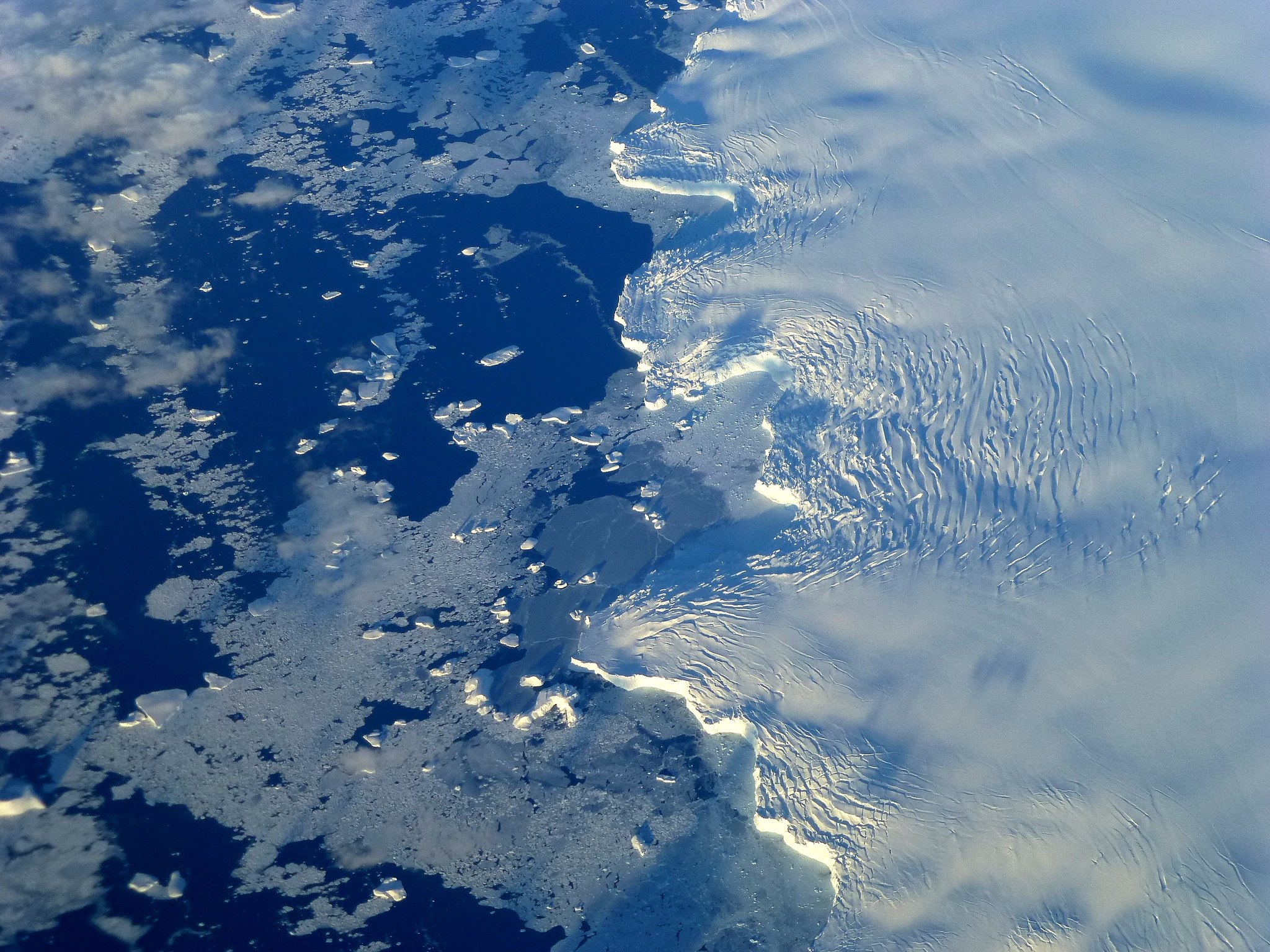Excerpt:
A Q&A with Richard Alley, professor of geosciences at Pennsylvania State University, on how melting at the South Pole could impact sea level rise.
Antarctica’s ice shelves are the gatekeepers between the continent’s glaciers and the open ocean.
As the planet warms, these shelves shrink, exposing more and more ice, which leads to more melting. This frozen continent rests under a massive ice sheet averaging more than a mile thick.
But a recent study in Science Advances found that Antarctica had 68 ice shelves that shrunk significantly between 1997 and 2021, adding up to about 8.3 trillion tons lost during that time.
Richard Alley is a professor of geosciences at Pennsylvania State University, and he joined Living on Earth Host Steve Curwood to shed light on what all this melting at the south pole could mean for the planet.
RICHARD ALLEY: [Melting] is contributing to raising sea level a little bit. Normally what an ice shelf does is they grow for a while. They grow and grow and grow. And then they break off one of these icebergs, and the icebergs can be huge. You’ll see the stories, it’s as big as Delaware, or it’s as big as the Isle of Man or something. So you expect the most of them to be growing and then occasionally breaking off.
What we’ve been seeing recently is a lot more breaking off than you would ordinarily expect. And that’s letting the pile spread faster, and it’s contributing a little bit to sea level rise. Sea level is rising, and it’s rising because we’re warming the ocean and the water expands. It’s rising because we’re melting ice in Antarctica a little bit, in Greenland a good bit, and especially in mountain glaciers. And the water that was stored up there runs into the ocean and makes it higher. And then we’ve got faster flow in Greenland and Antarctica into the ocean, which also raises sea level.
STEVE CURWOOD: By the way, that same study that we talked about in Science Advances show that 29 Ice shows grew. What does that mean for the climate? Any good news there?
ALLEY: It’s what we’d expect. So, the Ross Ice Shelf is a famous one, it sort of ended at the same place for the last 6000 years. And what it’ll do is it’ll advance, it’ll grow until it takes a fairly large chunk of ice past Ross Island, and then that chunk breaks off, and then it’ll grow. And then that chunk breaks off. And then it’ll grow. And it’s been doing this for 6000 years. And so you expect most of the shelves to be growing most of the time, because the growing is fairly slow. And the breaking off is fairly fast to make the iceberg.
CURWOOD: Continuing in our geology class for a moment longer here, as I understand it, much of the melting thus, so far has been really chipping away at the West Antarctica ice sheet. What’s going on in the East?
ALLEY: So, the East actually is changing a little faster than we expected. The ice shelves love really cold water and really cold air and they tend to show up in the coldest waters that are common in the world ocean. Warmer waters have an easier time getting up toward the West Antarctic than they do getting up toward the east, for various reasons linked to the winds, and the Amundsen Sea Low, and the atmosphere and a lot of things. So we’ve been worried about the West because it’s easier for warm water to flow in there and attack. But there is some warm water sneaking in in places in East Antarctica that I think surprised a few people. Me, certainly.
CURWOOD: One study that was recently published says that we have passed the point of no return for the West Antarctic ice shelves. What does that mean? And how soon are we going to feel the impacts of that?
ALLEY: Glaciers that go into the ocean have a tendency to be a little like a traffic jam that is hung up by a closed lane in the interstate. They end at a place which is very narrow. They’re backed up behind that, they’re trying to dump ice out into the ocean. And so the ice tends to end at a place which is fairly narrow and fairly shallow. If you kick it out of the bottleneck, it tends to retreat and dump the non-floating ice into the ocean until it can find another bottleneck to stabilize on.
When Vancouver discovered the ice in Glacier Bay in Alaska, there was no Glacier Bay. The entire bay where you go on a cruise ship now was full of ice. It was a mile thick in the middle. And then that ice was kicked out of the little narrow place that it ended by a little warming. And then John Muir watched the icebergs breaking off boom, boom, boom, boom, boom, boom, boom, and the thing backed up 60 miles, and it thinned by a mile until it found some other place to stabilize.
What we’re worried about in West Antarctica and parts of East Antarctica is that the ice now ends in a bottleneck, a place that is fairly narrow and fairly shallow for dumping icebergs. If it gets kicked out of there, and retreats, there are these big, deep interior basins. The next place that can stabilize is the Transantarctic Mountains, and that’s about 11 feet of sea level rise. So we’re really worried about West Antarctica because if it does, what we have seen happen in other places, it’s so much bigger, that it’s a whole lot of sea level rise. And so if we pass a point of no return for West Antarctica, it’s a lot of sea level rise…









